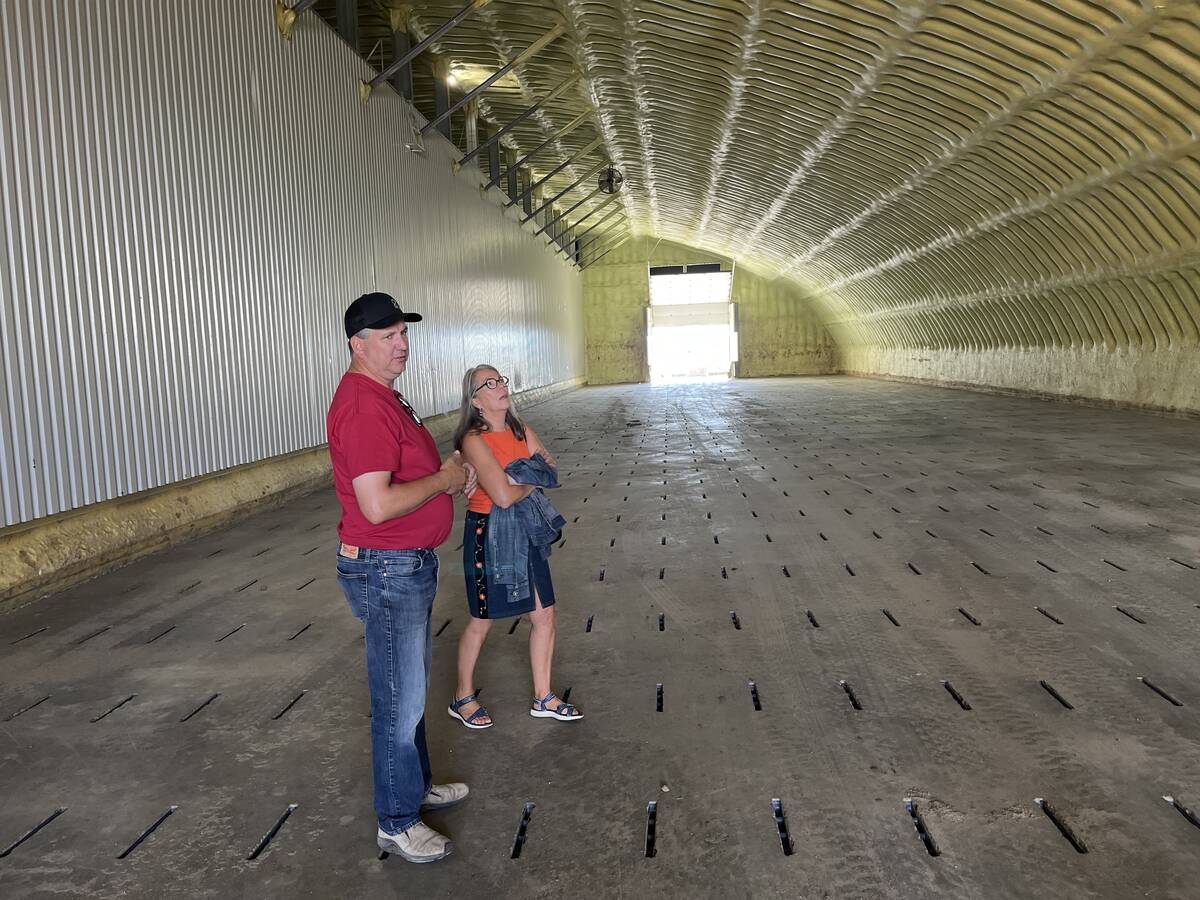Puratone stumbled into bankruptcy protection, owing Kyle Foster $33,000 to $35,000 for high-value feed wheat he had recently delivered.
He’s not alone. Other farmers near Arborg, Man., are in a similar situation, as probably are those who farm near other Puratone, Big Sky and independent hog barns across the Prairies as the industry grapples with the crippling impact of massive losses.
“Some guys are really upset,” said Foster. “Some are understanding, but still want their money.”
Foster is one of the understanding farmers, and there is little anger when he talks about Puratone, which is still operating and paying cash for grain deliveries.
Read Also

Potato farm requires year-round management
The most recent Open Farm Day in Alberta showcased agricultural producers across the province educating the general public about the process that is required is to get food to their table.
“Puratone’s a big part of the agriculture industry up here and it’s not good for anyone to see them go down,” he said.
“It’s unfortunate right across the board, whether you’re a grain producer or you work at the (Puratone) feed mill or you run a business in town. There are a lot of jobs involved here.”
While the losses hitting the hog industry most directly affect hog farmers, they also affect farmers who grow grain and sell it to feed barns, or to grain companies that supply hog barns.
Foster said a number of grain farmers in his area are owed money by Puratone.
“We’re an hour-and-a-half from rail, so it’s a big deal if you have winter wheat or some low protein wheat,” said Foster.
“It’s a good avenue to get rid of feedgrains.”
The hog industry’s problems come from the escalating price of feedgrains, which was caused by the severe drought in the U.S. Midwest. That has caused many American farmers to ship hogs early so that they don’t have to buy $7 or $8 corn, and to ship their sows and gilts to slaughter plants rather than keeping them back for breeding.
That has caused hog prices to fall. The squeeze between rising feedgrain and falling hog prices has caused farmers to often lose $50 per slaughter hog. Weanling producers are often finding no one to buy their piglets. The glut of hogs heading to market has also occurred at the typically weakest time of the year for the hog market, exacerbating the situation.
Fortunately for producers, there are early signs that the highs of feedgrain prices might have passed and the lowest of hog prices might be over.
“It feels like we’re trying to bottom out or stabilize and maybe build a little bit higher prices as we go into October, November, December,” said renowned hog industry economist Chris Hurt.
“That recovery at some point in the future will be stronger than if we had not gone through what you could call a panic in August and September.”
Hurt expects break-even prices to reappear in April and profitable prices in the summer.
Foster said he’s hopeful Puratone will sort out its problems while in bankruptcy protection and will be able to pay farmers the money it owes them.
Foster thinks feed mills and small manufacturers such as Puratone should be bonded the way grain companies are.
“Why are they still not bonded?” he said. “That’s something a lot of farmers like me weren’t aware of.”

















